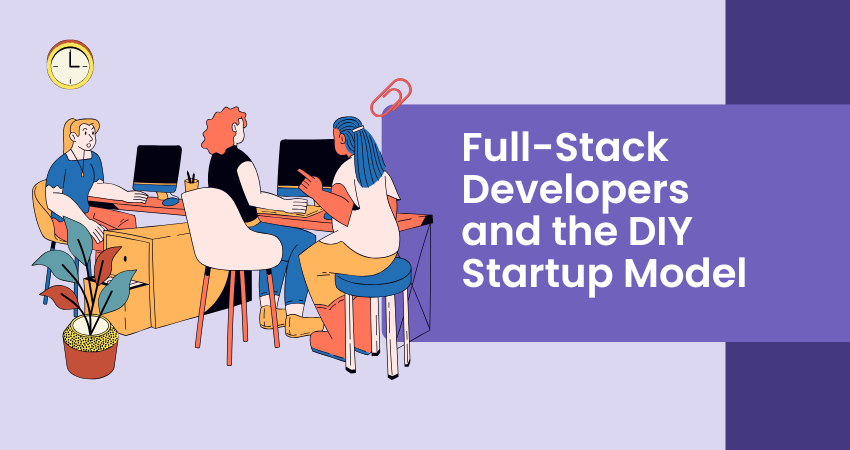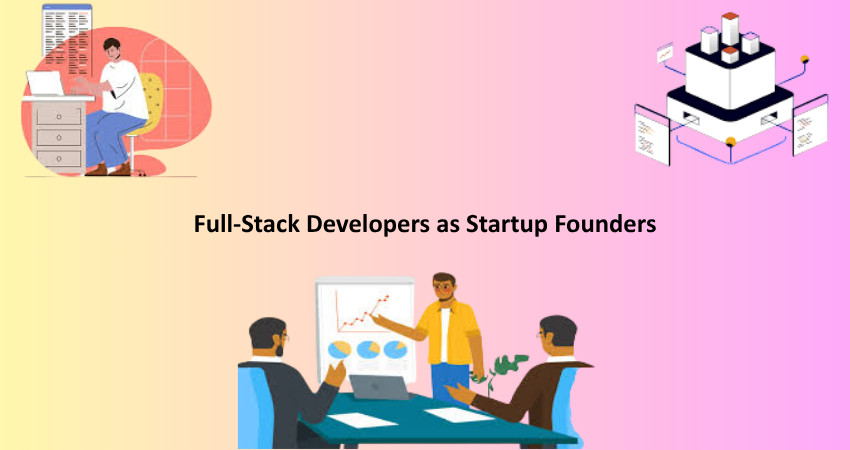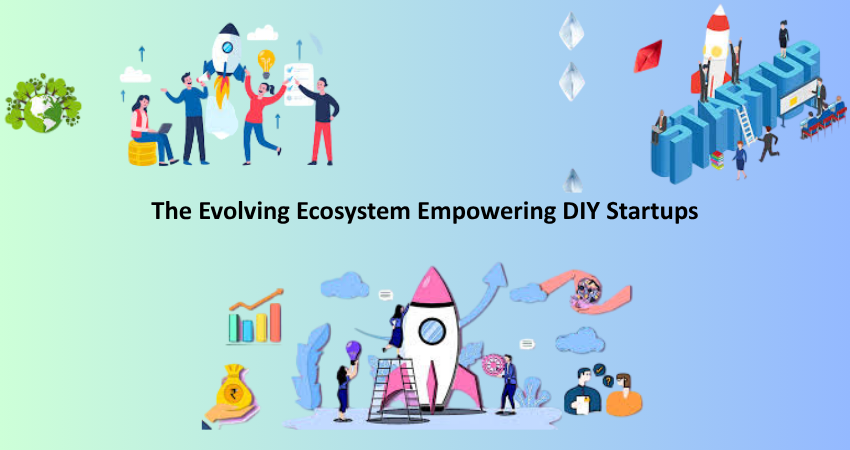
Introduction
However, in a fast-paced innovation world called startups, now they need resourceful and flexible human resources more than ever. A full-stack developer is one who can write both front-end and back-end code of an application, deploy it, maintain it, and manage its databases and servers. Such developers are the best placed to help the increasing number of entrepreneurs who are adopting the DIY startup model. The increasingly common scenario with most early-stage companies is that they are low on budgets, low staff, and pressured to go to the market very quickly-therefore, full-stack developers are a complete package in these cases. They will save a startup from moving an idea through an entire prototype and even to production-stage without putting together a large team and thus save on overhead and delay in decision making.
In a world of shoe-string budgets and lean approaches, the DIY startup model is becoming increasingly attractive. When founders are expected to have a vision and roll up their sleeves to build the product either by themselves or with a small team, they need either DIYers or full-stack developers-founders or early hires-as the crucial factor in the startup. Independent, self-sufficient management of the various components of software development makes full-stack developers incredibly valuable in validating ideas, rolling out MVPs, and providing rapid iteration based on user input. The article elaborates on how well full-stack developers enable the DIY startup model, what skills they bring, the value-additions by this particular model, and the challenges faced within this demanding yet rewarding environment.
The Core Capabilities of Full-Stack Developers
Mastery Across Front-End and Back-End Technologies
What makes a full-stack developer so appealing is that he/she is a master of all framework technologies. The languages that constitute front-end technology are HTML, CSS, and JavaScript because these core technologies are needed when learning the whole user interface. Full-stack developers typically employ React, Vue.js, or Angular to develop responsive applications or dynamic display, which function across platforms. Their mastery ensures that all users navigate through intuitive layouts with real-time interaction without glitches or, at the worst, a few inconsistencies. Startups can then do customer-facing applications quickly but quite attractively.
On the other hand, full-stack developers deal with server-side languages such as Node.js, Python, Ruby, PHP, or Java, but they also work on putting a full-fledged back end to build an application using things like Express.js or Django. Full-stack developers are responsible for the entire spectrum of tasks involved in server environments, from server to database (both SQL and NoSQL), API creation, authentication systems, server management, and everything else. They offer a wide range of powerful back-end logic, which addresses business rules within applications and performing data transactions through frameworks such as Express.js, Django, Flask, Laravel, and Spring Boot. That is, they are full-fledged enough to build an entire application ecosystem from the ground up without having to rely upon separate teams. Startups very much benefit from such end-to-end skills, especially in initial phases of development when speed is of utmost importance.
Versatility in DevOps and Deployment
Beyond coding, full-stack developers increasingly dextrous at applying DevOps practices that are very important for launching and scaling a product in a startup. They are familiar with version control systems such as Git and CI/CD pipelines mainly using GitHub Actions, Travis CI, or Jenkins. These tools allow for automation of code integration and deployment, thereby accelerating release cycles and minimizing downtime. Apart from that, full-stack developers are familiar with containerization tools such as Docker and orchestration platforms such as Kubernetes for application scaling and environment replication.
The DIY startup setting requires robust knowledge of deployment, as any of the activities involved in this process-from domain configuration to SSL certificate installation-take on the weight of one person’s shoulder. Full-stack developers know how to pick the right hosting solution, whether shared hosting, AWS or GCP cloud services, or serverless platforms like Vercel or Netlify. The establishment of staging environments, application performance monitoring, and server security are all associated primarily with a fully-fledged DevOps team. This very capacity is precisely what makes it such a force driving do-it-yourself startups from sketch to launch.
Full-Stack Developers as Startup Founders

Building MVPs with Limited Resources
Minimum viable products are critical in modern startup formation. They enable entrepreneurs to test their ideas in real market settings without building up every feature involved. Full-stack developers would be perfect MVP builders because they can transform ideas into functional applications by themselves. They simplify the process of MVP development in terms of time and cost by being involved in every aspect-from database architecture to UI design. Such independence is vital for bootstrapped entrepreneurs proving an idea out without funding.
Rather than waiting for external developers or an agency to complete an agile approach, the full-stack developer startup founders can have a go at it in their own time and speed. They can deploy updates frequently, test alternative features, gather users’ feedback, and make changes to the product as required-without being dependent upon a heavyweight extended team. This rapid build-measure-learn cycle allows them to learn early about the product-market fit and pivot accordingly while maintaining flexibility against the changing demands of the market. For most DIY startups, the ability to launch quickly and continuously evolve is the edge between success and failure.
Strategic Advantages in Fundraising and Pitching
For investors and venture capitalists, especially millennial types, lean and capable founding teams should be able to execute without much burn. A startup founded by a full-stack developer attests to the technical soundness and self-dependence of operations from the early day. These factors can dramatically increase the chances of funding, since potential funders will be more confident in the team’s skill to build quickly and iterate without burning the cash. Full-stack founders’ MVPs become living proof of their abilities, dedication, and capability.
Being able to show a live product-in even its most primitive state-holds the promise of making pitch presentations much more compelling. Instead of only coming with a PowerPoint slideshow, the founders will be able to showcase the actual platforms, flows, and even functional prototypes of their work. Such credibility is also expected to speed up funding times. In addition, the technically and economically savvy founding fathers will be able to sell more efficiently the proposition of value, technical feasibility, and scalability of their solutions. That is the strategic advantage in a very brutal startup ecosystem.
Challenges Faced by Full-Stack Founders in DIY Startups
Burnout and Context Switching
A jack of all trades has even disadvantages such as being a full-stack developer: moving across the entire stack often leads to a collision of many roles-developer, product manager, designer, DevOps engineer, or, from time to time, marketing assistant. Spending most of his time in coding and debugging to testing, deployments, and customer feedback becomes a complete fatigue for the human mind. Yet more context switching means less focus, more errors, and an ill founder. Often, this is a certain recipe for burnout.
Not only does this burnout affect individual well-being, but it also stunts the health of the startup. Because of fatigue, the pace of work slows: development cycles lag, deadlines are missed, and product quality declines. Thus, the full-stack founders need to be aware of the risks of overextension and develop strategies for managing their workload. Blocking out time for certain tasks, delegating wherever possible, and taking a break to recharge are needed. As the startup grows, hiring specialists who can handle the tedious work will allow the founder to transition from “doing it all” to manage effectively—making way for sustained growth and innovation.
Gaps in Specialized Expertise
Full-stacks are developed for generality; however, they may not carry the skill set for some tasks that require in-depth specialization. Examples might include: designing an enterprise-grade security system, optimizing machine learning models, or tuning a relational database for performance. While this might not have been much of a problem in the early stages of the startup, as the product scales with increasing user demands, this limitation can become a big bottleneck for the product. There can arise situations where sticking only to generalist skills might lead the company into technical debts, possible security flaws, or architectural inefficiencies.
A solution could involve full-stack founders bringing in external consultants or hiring team members with specialized knowledge to provide deeper insight in that area. Sourcing from domain specialists narrows the quality and performance bars and accords all possible regulations. However, some of these deficits could be met through experience and on-the-job training, although knowing when to bring in external assistance is critical. This awareness of what the full stack model is incapable of is essential for scaling from MVP to full market readiness.
The Evolving Ecosystem Empowering DIY Startups

Tools, Frameworks, and No-Code Platforms
It is a booming DIY startup ecosystem that comes along with very fast growing development tools and platforms. These tools and platforms help an entire range of applications to build and launch with reduced complexity. The features are now available to full-stack developers through very good frameworks such as Next.js, Laravel, and Spring Boot, which would abstract much of the back-end complex functionality. Employing pre-made templates and reusable application programming interfaces (APIs) will further assist in speeding product development. Modern integrated development environments (IDEs) and collaborative support tools would seal any remaining productivity gaps. They build faster, debug smarter, and deliver faster. Basically, that’s the idea behind a DIY startup.
Full-stack developers are therefore able to offload monotonous chores or prototype faster with the new introduction of no-code and low-code environments such as Bubble, Webflow, and Firebase. Originally started off as builders for non-developers, experienced developers are now using the platforms to build MVPs and internal tools, taking advantage of their quickness and user-friendliness. By marrying traditional coding skills with modern-day platforms, full-stack developers can expand their capabilities, reach broader audiences, and bring innovations faster to market. Having been endowed with the skills to marry custom programming with a modern-day application in support of low-code, full-stack developers gain an extra edge in furthering their startups.
Communities, Mentorship, and Open-Source Contributions
One such trend that appears to be giving a powerful boost to full-stack developers in the big DIY startup world is the open-source communities and online mentoring networks. These resources include GitHub repositories, Stack Overflow threads, developer blogs, and YouTube tutorials that allow free and instant access to solutions, best practices, and snippets of code. Such information abundance shrinks the learning curve and aids in solving problems, allowing developers to spend more time building and less time reinventing the wheel.
Indie Hackers, Dev.to, and Reddit’s r/startups are developer communities that create a support network for developers to share stories, advice, and resources. While many full-stack founders gain access to mentoring programs, startup accelerators, and boot camps, all of which bring technical and business knowledge into play, those who complete them should continue participating in such ecosystems so that they remain relevant as full-stack developers while also networking potential collaborators, co-founders, and early adopters. These relations can prove lifesaving in steers through the murky waters of early-stage entrepreneurship.
Conclusion
Full-stack developers are a major force driving the rise of the DIY startup model. These professionals travel the spaces in between front-end and back-end development, infrastrucrure, and deployment-and they alone have the true qualifications to start and scale tech products while expending the least energy necessary. They enable founders to move fast, verify ideas, and pivot based on user feedback while above it all: controlling the development process. In a world where agility and speed are everything, full-stack developers very much represent the self-reliance of a new breed of entrepreneurs.
The flip side to this model is hardly a smooth ride. These very qualifiers are the ones leading to burnout, context switching, and vague specialized knowledge. These are only fixable hurdles if good time management, delegation practices, and community support are applied. As the tech world changes and keeps growing in complexity, full-stack developers will have even more say in shaping not just the products of the future but also how these products come alive. For anyone thinking of setting foot on a DIY startup journey, adopting a full-stack attitude may just be the secret to unlocking their creative potential and lasting success.